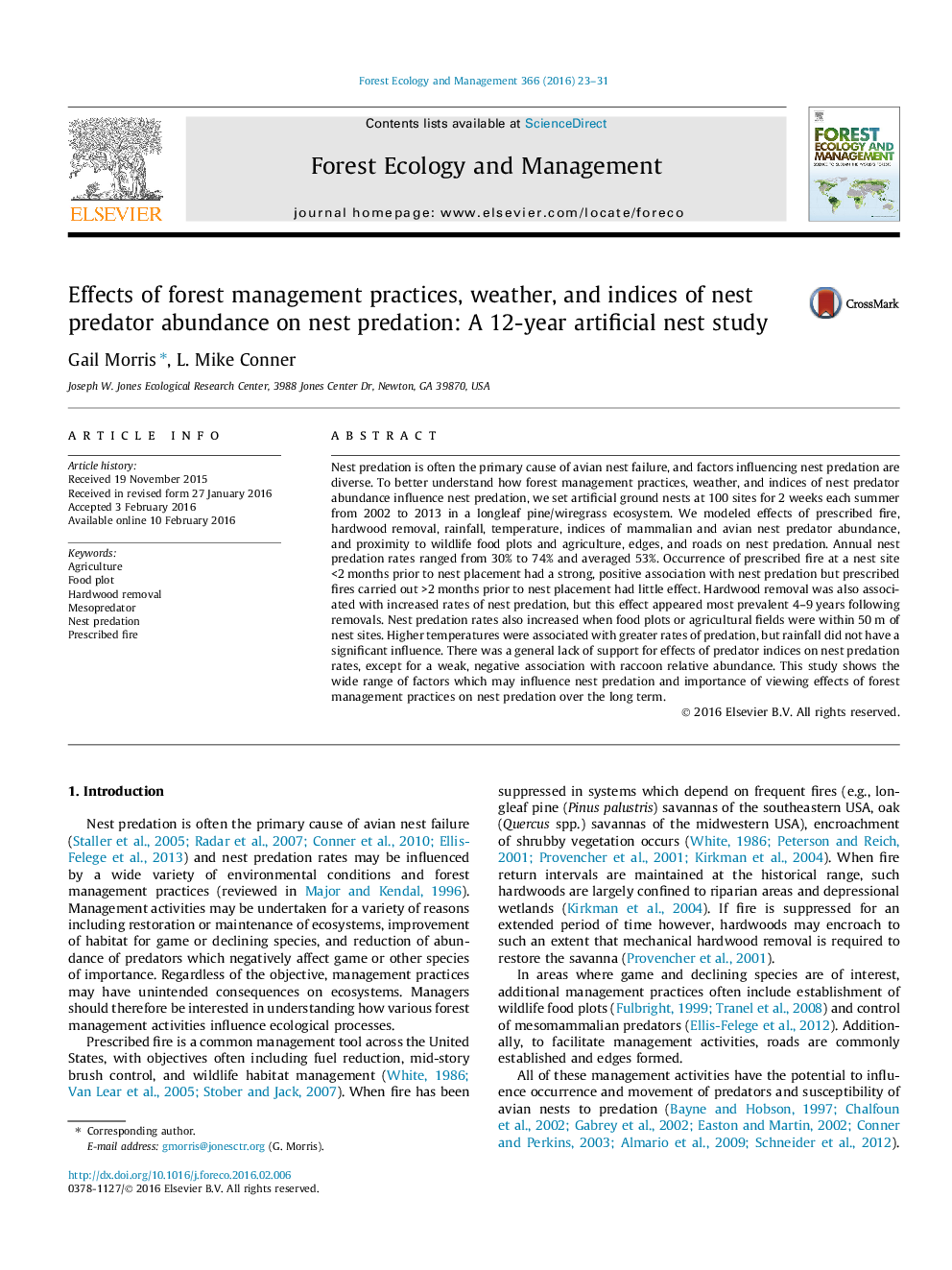| کد مقاله | کد نشریه | سال انتشار | مقاله انگلیسی | نسخه تمام متن |
|---|---|---|---|---|
| 86034 | 159159 | 2016 | 9 صفحه PDF | دانلود رایگان |
• We evaluated nest predation in relation to forest management practices over 12 years.
• Predation increased markedly <2 months, but not >2 months after prescribed fire.
• Predation increased when food plots/agricultural fields were within 50 m of nests.
• Nest predation increased after hardwood removal, especially 4–9 years after removals.
Nest predation is often the primary cause of avian nest failure, and factors influencing nest predation are diverse. To better understand how forest management practices, weather, and indices of nest predator abundance influence nest predation, we set artificial ground nests at 100 sites for 2 weeks each summer from 2002 to 2013 in a longleaf pine/wiregrass ecosystem. We modeled effects of prescribed fire, hardwood removal, rainfall, temperature, indices of mammalian and avian nest predator abundance, and proximity to wildlife food plots and agriculture, edges, and roads on nest predation. Annual nest predation rates ranged from 30% to 74% and averaged 53%. Occurrence of prescribed fire at a nest site <2 months prior to nest placement had a strong, positive association with nest predation but prescribed fires carried out >2 months prior to nest placement had little effect. Hardwood removal was also associated with increased rates of nest predation, but this effect appeared most prevalent 4–9 years following removals. Nest predation rates also increased when food plots or agricultural fields were within 50 m of nest sites. Higher temperatures were associated with greater rates of predation, but rainfall did not have a significant influence. There was a general lack of support for effects of predator indices on nest predation rates, except for a weak, negative association with raccoon relative abundance. This study shows the wide range of factors which may influence nest predation and importance of viewing effects of forest management practices on nest predation over the long term.
Journal: Forest Ecology and Management - Volume 366, 15 April 2016, Pages 23–31
